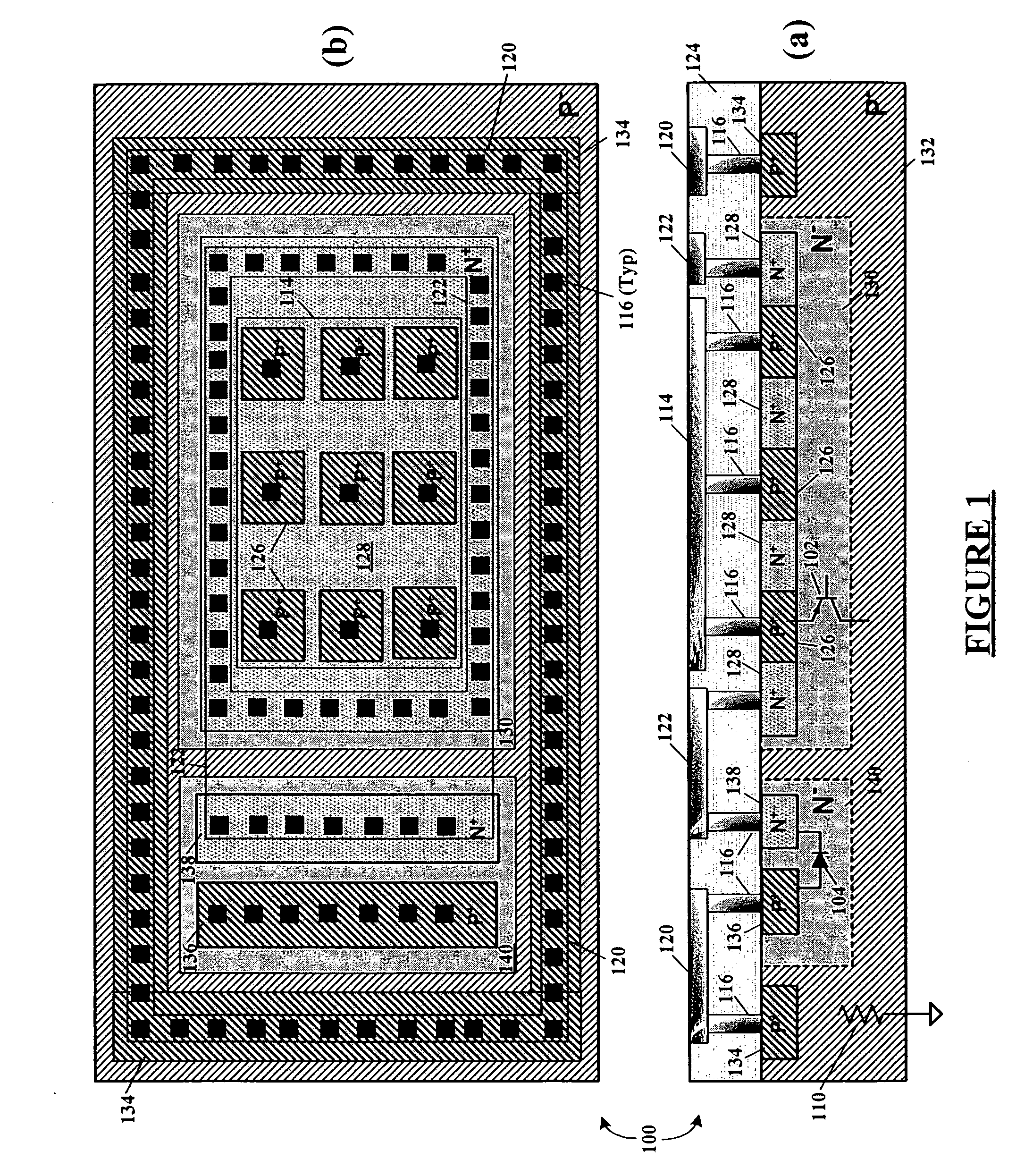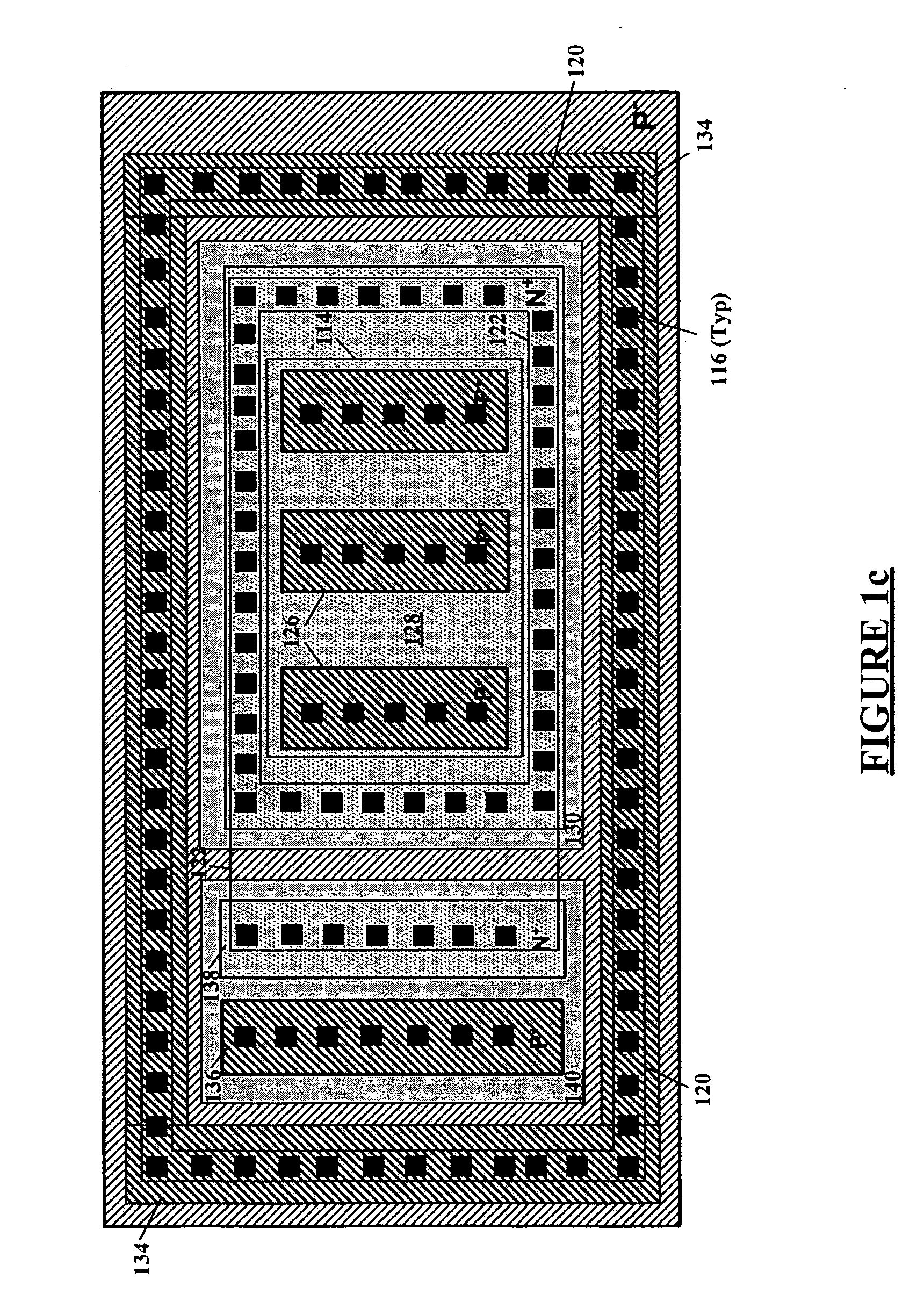High voltage ESD-protection structure
a protection structure and high voltage technology, applied in the direction of semiconductor devices, semiconductor/solid-state device details, electrical apparatus, etc., can solve the problems of extremely thin dielectrics, high current clamping, and high voltage electrostatic discharge of semiconductor integrated circuit inputs and outputs, etc., to achieve enhanced high voltage esd clamping, reduce the size of an esd structure, and reduce the effect of current clamping
- Summary
- Abstract
- Description
- Claims
- Application Information
AI Technical Summary
Benefits of technology
Problems solved by technology
Method used
Image
Examples
Embodiment Construction
[0022] Referring now to the drawings, the details of exemplary embodiments of the present invention are schematically illustrated. Like elements in the drawing will be represented by like numbers, and similar elements will be represented by like numbers with a different lower case letter suffix. P− refers to lighter doped p-silicon, P+ refers to heavier doped p-silicon, N− refers to lighter doped n-silicon, and N+ refers to heavier doped n-silicon, wherein p-silicon has a plurality of positive immobile silicon ions, and n-silicon has a plurality of negative immobile silicon ions.
[0023] Referring to FIG. 1, depicted is a schematic diagram of a high voltage ESD-protection structure, according to an exemplary embodiment of the invention. FIG. 1a illustrates a sectional elevational view, FIG. 1b illustrates a plan view of the high voltage ESD-protection structure, and FIG. 1c illustrates a plan view of another high voltage ESD-protection structure. A semiconductor integrated circuit co...
PUM
 Login to View More
Login to View More Abstract
Description
Claims
Application Information
 Login to View More
Login to View More - R&D
- Intellectual Property
- Life Sciences
- Materials
- Tech Scout
- Unparalleled Data Quality
- Higher Quality Content
- 60% Fewer Hallucinations
Browse by: Latest US Patents, China's latest patents, Technical Efficacy Thesaurus, Application Domain, Technology Topic, Popular Technical Reports.
© 2025 PatSnap. All rights reserved.Legal|Privacy policy|Modern Slavery Act Transparency Statement|Sitemap|About US| Contact US: help@patsnap.com



